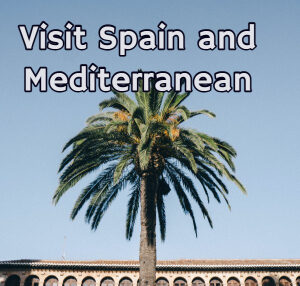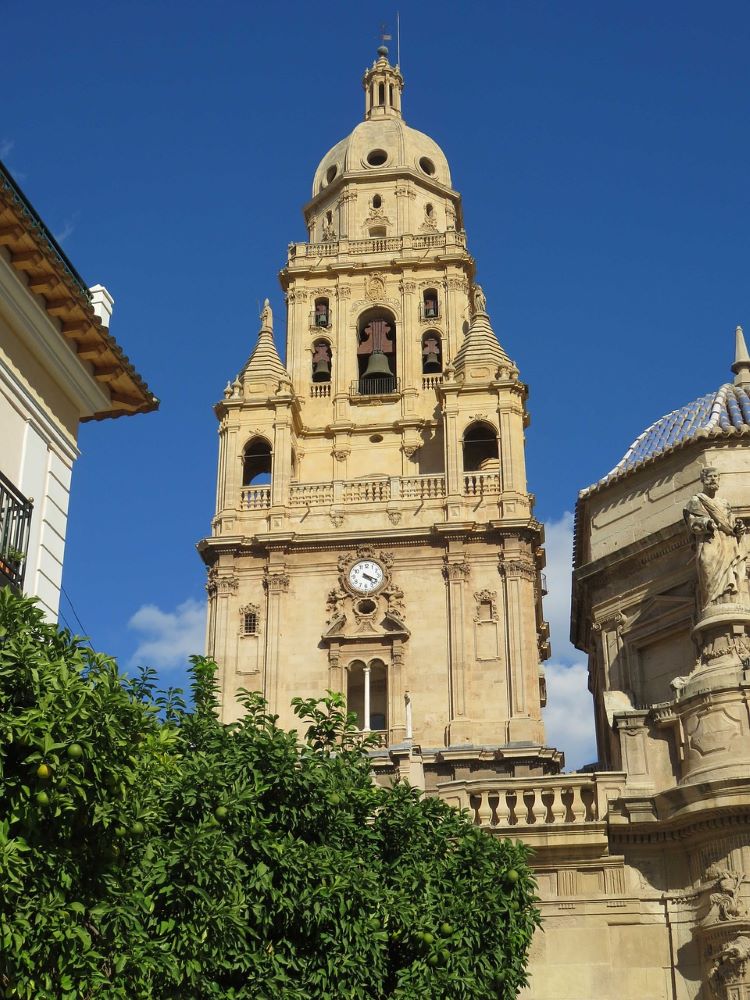Murcia Attractions in Spain
Murcia, the capital city of the Murcia region located in the Southeastern section of Spain is not so well known compared to major tourist destinations like Barcelona, Madrid and Malaga. But what Murcia lacks in tourist visitors to the area, the city is historic and filled with so many amazing treasures, attractions and amazing cuisine worth visiting.
Surprisingly, the city is beautiful and hosts so many wonderful places to explore and enjoy. From well-maintained walking promenades opening up to beautiful squares and passing through historic monuments, public markets and other historic sites that make the Old Town a must visit area.
I really enjoyed walking around the historic district and exploring the river area and other cool places to visit. I share all my favorite places to visit and explore from below so you can get a good idea about visiting many of these places yourself. With walking only promenades that open up to beautiful squares, it’s no wonder that locals love to experience the lifestyle here and as a visitor, I really enjoy visiting these attractions on foot and without all the tourist crowds.
Murcia Attractions – Historic sites, popular and cultural sites and landmarks
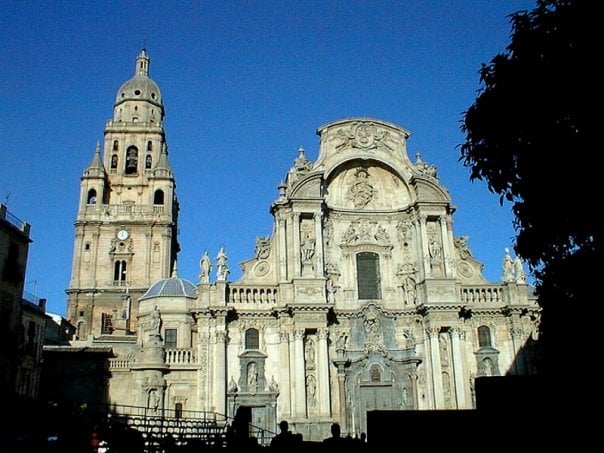
A brief history of Murcia, Spain
Murcia, located in southeastern Spain, has a rich history shaped by various civilizations. Founded by the Moors in 825 AD under the name Mursiya, the city was established as a key agricultural and defensive settlement along the Segura River. Its strategic location and sophisticated irrigation systems—many of which are still in use—allowed it to flourish. In the 13th century, Murcia came under Christian rule when it was peacefully annexed to the Kingdom of Castile. Over time, it grew into a regional hub for silk production, trade, and religious influence, especially during the Baroque period when many of its churches and landmarks were built. Despite being lesser known than some other Spanish cities, Murcia has retained a strong local identity, blending Moorish, Christian, and agricultural legacies in its culture and architecture.
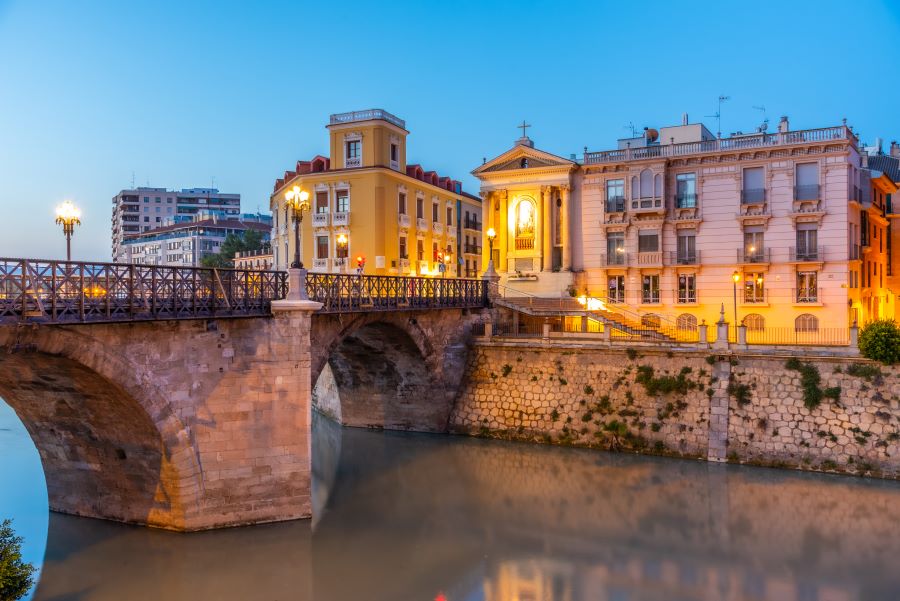
Where is Murcia located
Murcia is located in southeastern Spain, in the region known as the Costa Cálida, between Andalusia and the Valencian Community. It sits inland from the Mediterranean coast, about 25 kilometers from the sea, and is built along the Segura River, which has shaped much of its agricultural landscape. The city is the capital of the Region of Murcia, an autonomous community, and is surrounded by mountains and fertile plains that have supported farming for centuries. Its central location in the region makes it a good base for exploring both inland areas and nearby coastal towns like Cartagena and Águilas.
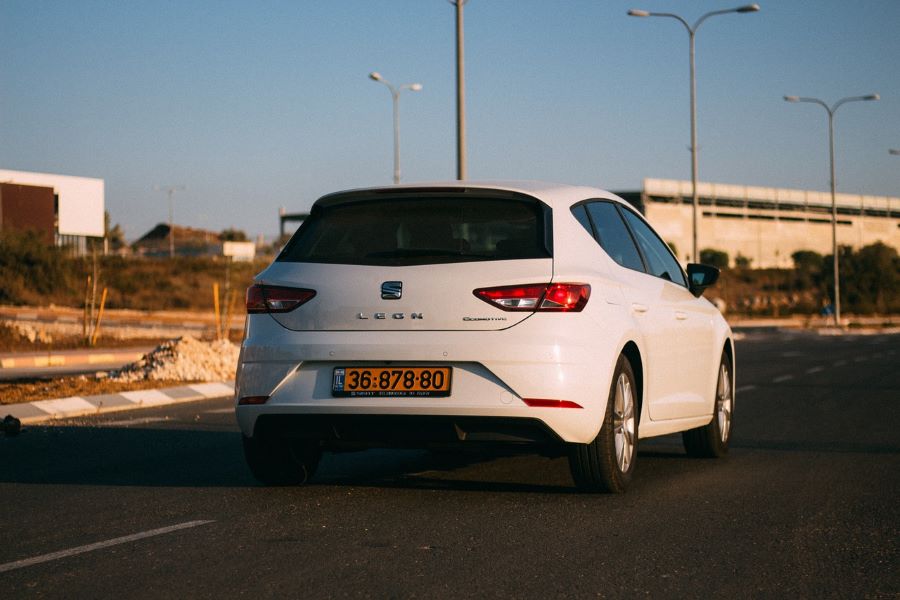
How to get to Murcia, Spain
How to Get to Murcia, Spain
- By Air:
- Región de Murcia International Airport (RMU): Located about 25 km from the city center, this is the nearest airport with flights from several European cities.
- Alicante-Elche Airport (ALC): About an hour away by car or bus, it has a wider range of international connections.
- By Train:
- Murcia is connected to major Spanish cities like Madrid, Valencia, and Alicante via RENFE trains.
- The main station, Murcia del Carmen, is close to the city center and offers both regional and long-distance services.
- By Bus:
- ALSA and other regional bus companies operate frequent services to and from Murcia, connecting it with Madrid, Granada, Seville, and coastal cities.
- Buses arrive at the main bus station (Estación de Autobuses de Murcia), a short walk from the historic center.
- By Car:
- Murcia is easily reached by road via the A-7 (Autovía del Mediterráneo) and A-30 motorways.
- Driving allows flexibility to explore nearby towns, coastal areas, and the countryside.
- By Ride Share or Private Transfer:
- Options like BlaBlaCar (ride-sharing) or private shuttles from airports can be convenient alternatives to public transport, especially if traveling with luggage or in a group.
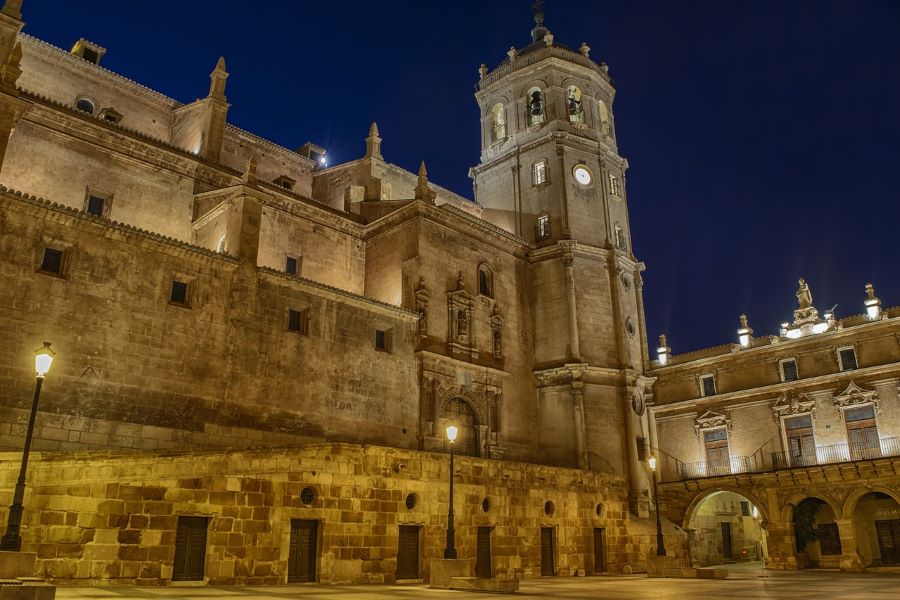
Top places and attractions to visit
There are so many wonderful historic and cultural treasures to visit and experience in the Old Town and around the city. Here are the popular attractions to put in your list of places to visit.
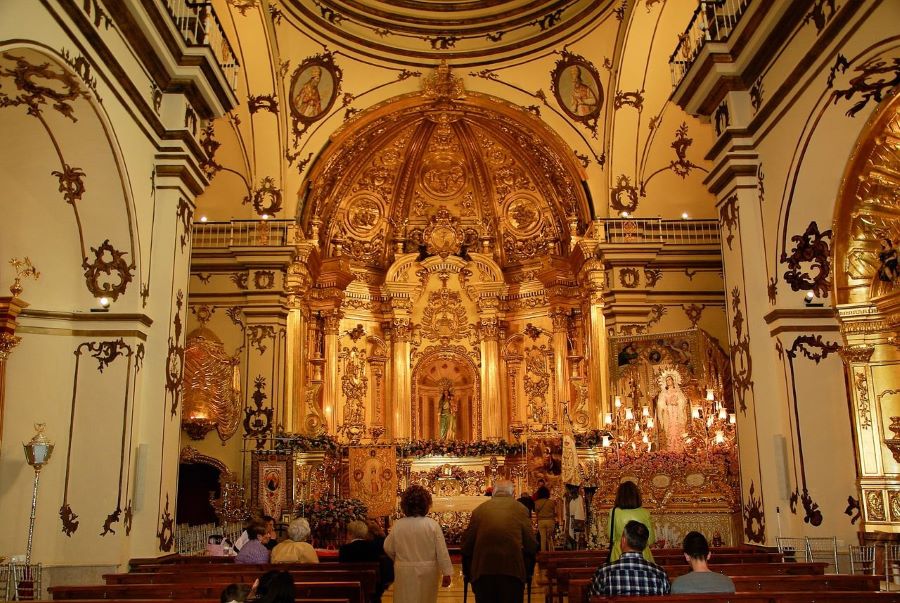
Murcia Cathedral (Catedral de Murcia)
Murcia Cathedral, officially known as the Cathedral Church of Saint Mary, is one of the city’s most striking landmarks and a symbol of its layered history. Built on the site of a former mosque, construction began in the late 14th century and spanned several centuries, resulting in an impressive mix of Gothic, Renaissance, and Baroque architectural styles. The elaborate Baroque façade is a standout feature, especially when lit in the afternoon sun. Inside, the cathedral is equally detailed, with a grand altarpiece, intricate chapels, and the ornate tomb of King Alfonso X’s heart. One of the most notable elements is the 93-meter-tall bell tower, the second tallest in Spain, which offers panoramic views over Murcia’s rooftops. The cathedral is not only a place of worship but also a cultural and architectural centerpiece in the heart of the city.
-
- Iconic blend of Gothic, Renaissance, and Baroque styles
- Climb the bell tower for panoramic city views
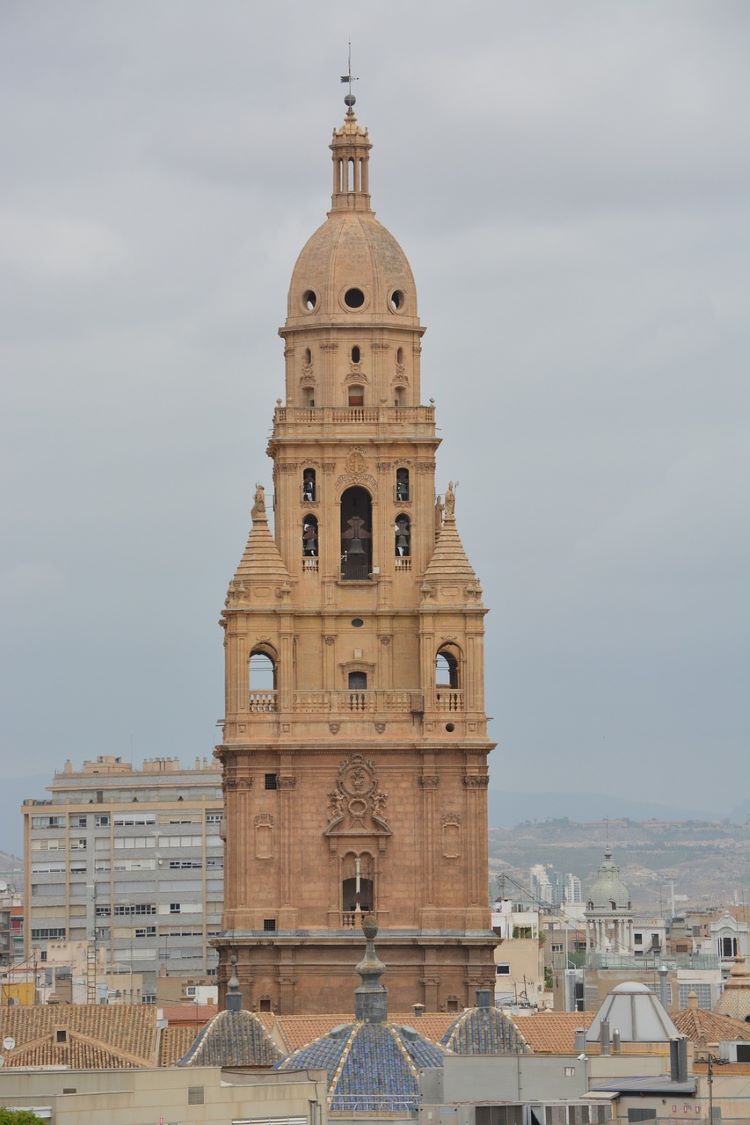
The Bell tower of Murcia is 93 meters tall
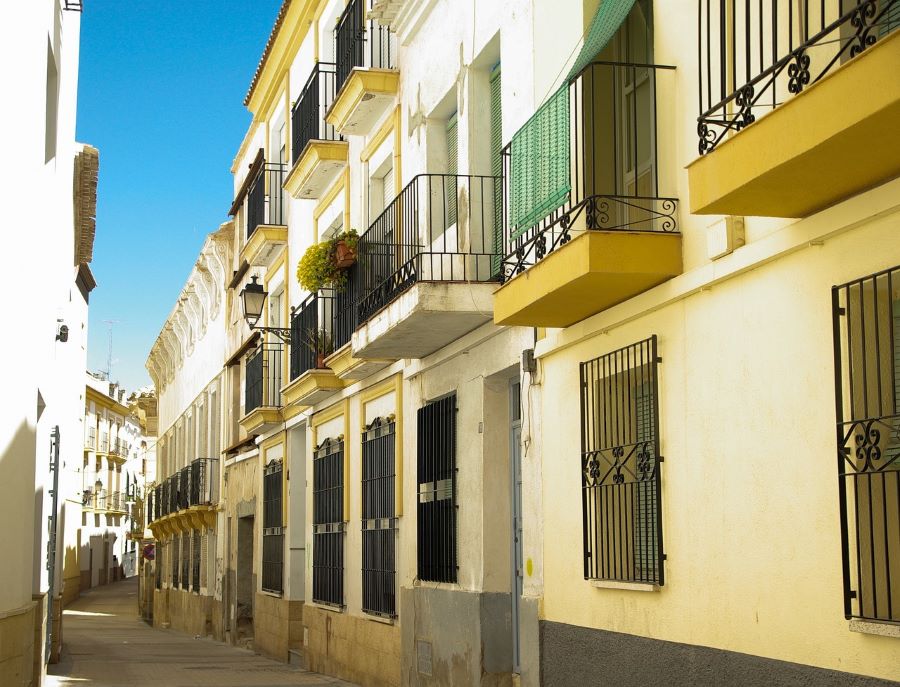
Explore the Old Town of Murcia
Murcia’s old town blends centuries of history with a relaxed, local vibe that makes wandering its streets a pleasure. At its heart is the Cathedral of Murcia, an impressive mix of Gothic, Renaissance, and Baroque styles, surrounded by a maze of narrow lanes lined with ochre-colored buildings, cozy cafés, and small boutiques. You’ll find traditional tapas bars tucked between baroque churches and quiet plazas where locals linger over coffee. The area is walkable and inviting, with spots like the Real Casino de Murcia offering a peek into the city’s elegant past. It’s a place where daily life and heritage comfortably overlap.
It’s so easy to just wander down the many walking only promenades of the Old Town and enjoy the architecture, cool shops and specialty food venues and then opening up to these amazing squares. I didn’t mind just wandering and enjoying what to see and do without any plan.
Tip – If you decided to learn more about the Old Town of Murcia, you can sign up for walking tours offered by the Murcia Tourism office that is located at Plaza Cardinal Belugas.
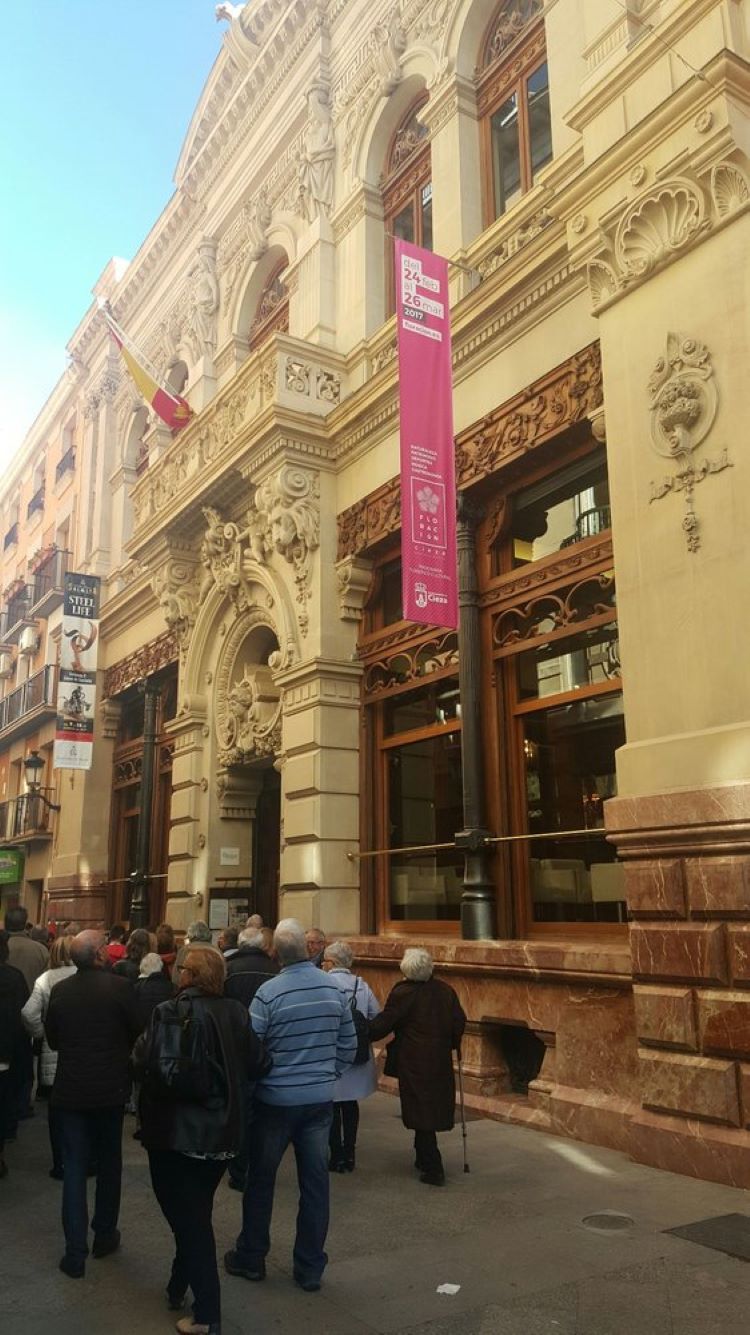
Real Casino de Murcia
The Real Casino de Murcia, situated on Calle Trapería in the heart of the city, is a standout example of 19th-century Spanish architecture and social history. Established in 1847 as a private gentlemen’s club, the building showcases an eclectic mix of artistic styles, including neo-Baroque, neo-Nazarí, and modernist elements. Among its most notable features is the Moorish-style patio, adorned with over 20,000 sheets of gold leaf and topped by an iron and glass dome. Visitors can also explore the opulent ballroom, the elegant English-style library, and the neoclassical Pompeian patio with its Ionic columns and central statue of Venus. Declared a national historical-artistic monument in 1983, the Casino underwent a comprehensive restoration between 2006 and 2009, after which it was granted the title “Real” by King Juan Carlos I. Today, while still functioning as a private club, the ground floor is open to the public, offering a glimpse into Murcia’s rich cultural and architectural heritage.
-
-
- 19th-century social club with lavish interiors
- A mix of Moorish, modernist, and classical design
-

Interior view of Real Casino de Murcia
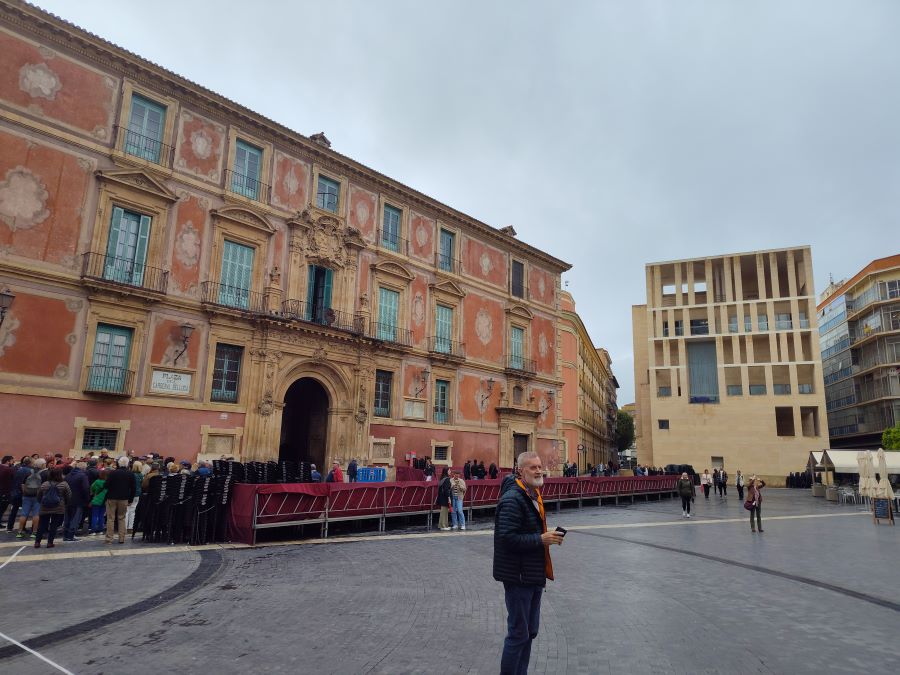
Plaza Cardenal Belugas
Plaza Cardenal Belluga is a central square in Murcia, Spain, renowned for its architectural and cultural significance. Flanked by the Murcia Cathedral, the Episcopal Palace, and the modern City Hall annex designed by Rafael Moneo, the square showcases a blend of Gothic, Baroque, and contemporary styles. Established in the 18th century, it serves as a hub for religious and civic events, including Holy Week processions and local festivals. The pedestrian-friendly area is popular among locals and tourists alike, offering a vibrant atmosphere with cafes and restaurants, making it an ideal spot for relaxation and people-watching.
-
-
-
- Central square featuring the Cathedral and Episcopal Palace
- Great spot for photos and people-watching
-
-
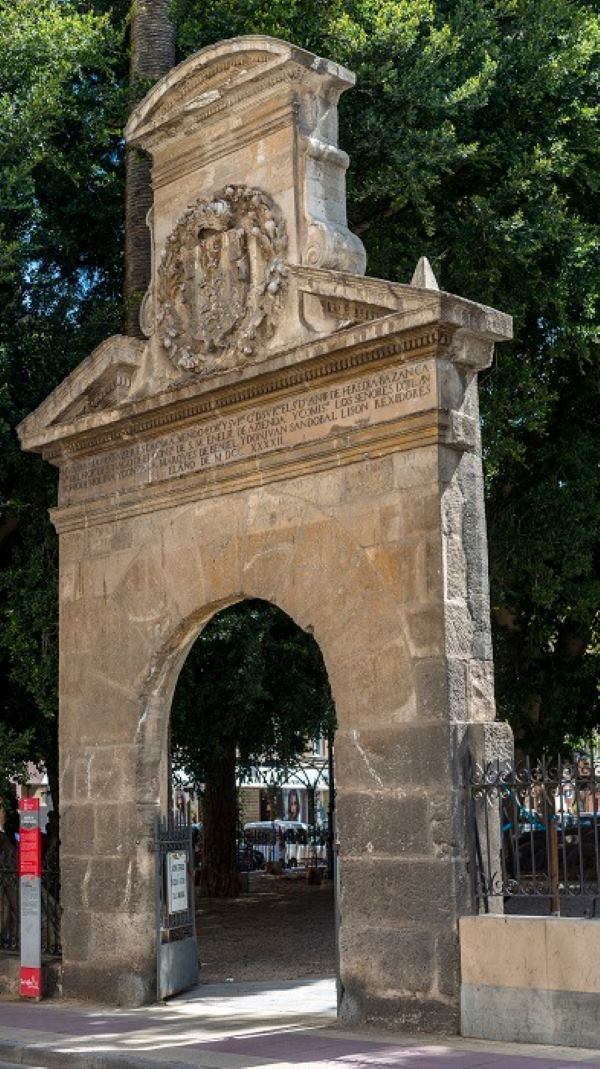
Floridablanca Garden (Jardín de Floridablanca)
Floridablanca Garden, located in Murcia’s historic Barrio del Carmen, is recognized as Spain’s first public garden, established in the mid-19th century. Spanning over 11,000 square meters, it features a romantic design with shaded walkways lined by monumental ficus trees planted in the early 20th century. The garden is adorned with sculptures honoring notable Murcians, including a statue of José Moñino, Count of Floridablanca, a prominent 18th-century statesman. Additional features include the relocated 18th-century slaughterhouse gate and a variety of tree species such as jacarandas and poplars. Its proximity to the Iglesia del Carmen enhances its appeal, making it a cherished spot for both locals and visitors seeking a tranquil retreat within the city.
-
- Shady walkways, fountains, and historical statues
Salzillo Museum (Museo Salzillo)
The Salzillo Museum in Murcia is a tribute to Francisco Salzillo, an 18th-century sculptor renowned for his religious artworks. The museum, opened in 1960 and remodeled in 2002, combines the Baroque architecture of the Church of Nuestro Padre Jesús with a modern exhibition space. It houses Salzillo’s notable processional sculptures, including “The Last Supper” and “The Kiss of Judas,” which are central to Murcia’s Good Friday traditions. A highlight is the Nativity scene with over 500 figures, reflecting 18th-century Murcian life. The museum also features Salzillo’s sketches and a recreated workshop, offering insights into his creative process. Located in Plaza de San Agustín, it’s a key destination for those interested in religious art and Murcian culture.
-
- Dedicated to Baroque sculptor Francisco Salzillo
- Home to religious sculptures used in Holy Week processions
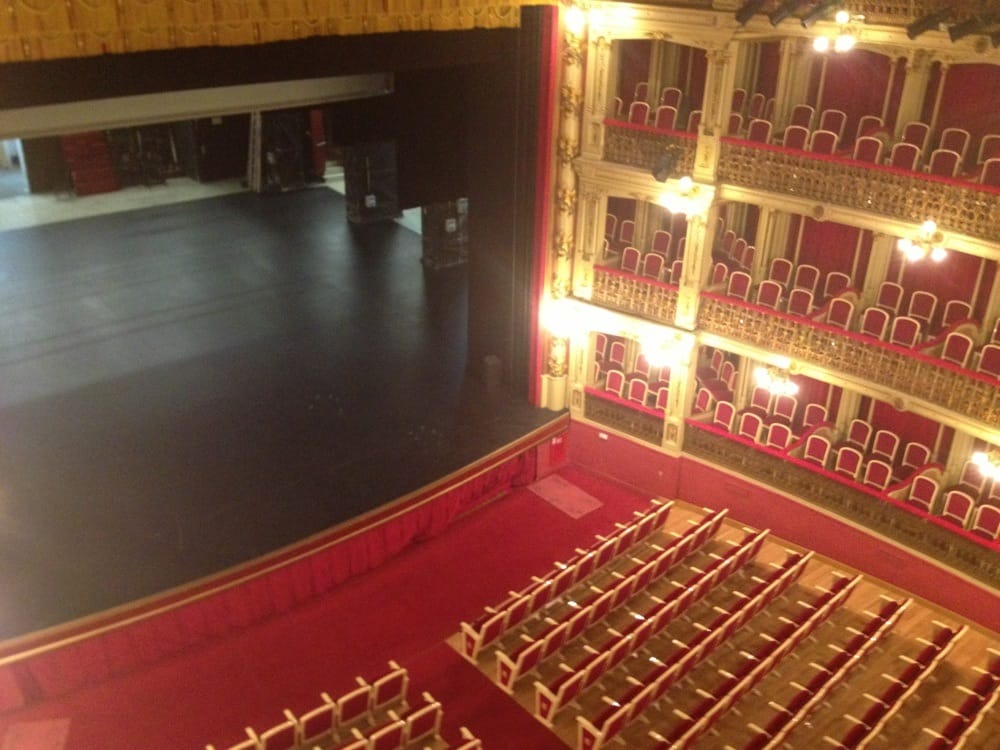
Romea Theatre (Teatro Romea)
The Romea Theatre in Murcia, inaugurated in 1862, stands as a significant cultural landmark in the city. Originally named Teatro de los Infantes, it was later renamed in honor of the Murcian actor Julián Romea. The theatre has endured two major fires in the 19th century, leading to several restorations, with the most recent significant renovation completed in 1985 . Its façade showcases an eclectic style with neoclassical influences, adorned with busts of Beethoven, Mozart, and Liszt, and medallions of notable Murcian playwrights . Inside, the ceiling features paintings by Antonio de la Torre and Inocencio Medina, depicting the coronation of Julián Romea by the muses . The theatre’s auditorium, designed in a horseshoe shape, offers excellent acoustics and comfort, making it a cherished venue for a variety of performances, including theatre, dance, and music . Located in Plaza de Julián Romea, it continues to be a central hub for Murcia’s cultural
-
- Historic 19th-century theater still in use today
- Hosts concerts, plays, and cultural events
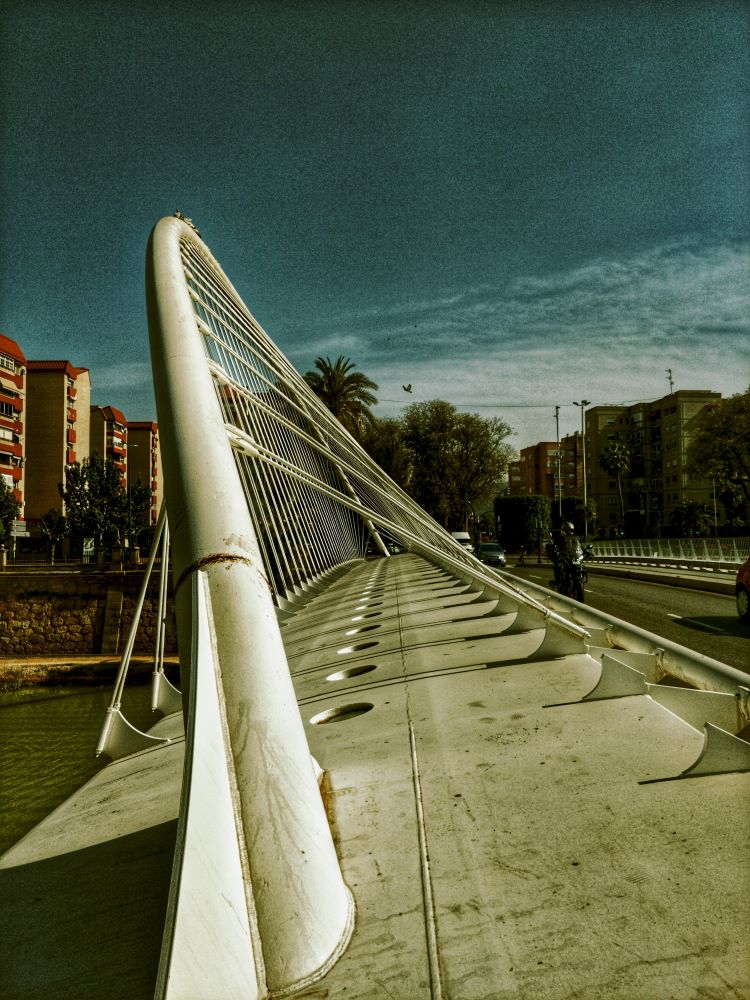
Segura River Walk (Paseo del Malecón)
The Paseo del Malecón in Murcia is a historic riverside promenade that stretches over 1.5 kilometers along the Segura River. Originally constructed in the 15th century as a flood defense, it was rebuilt in the 18th century and now serves as a popular spot for walking, jogging, and enjoying views of the surrounding gardens and orchards. Elevated about three meters above ground level, the promenade connects the city to the fertile Huerta region and features shaded paths, stone benches, and access to the city’s largest botanical garden. The Malecón is also a cultural hub, hosting events like the annual September Fair, where food stalls, artisan markets, and live music bring the area to life. Its blend of historical significance, natural beauty, and community activity makes it a cherished part of Murcia’s landscape.
-
- Riverside promenade ideal for a relaxed stroll
- Offers views of gardens and traditional irrigation channels
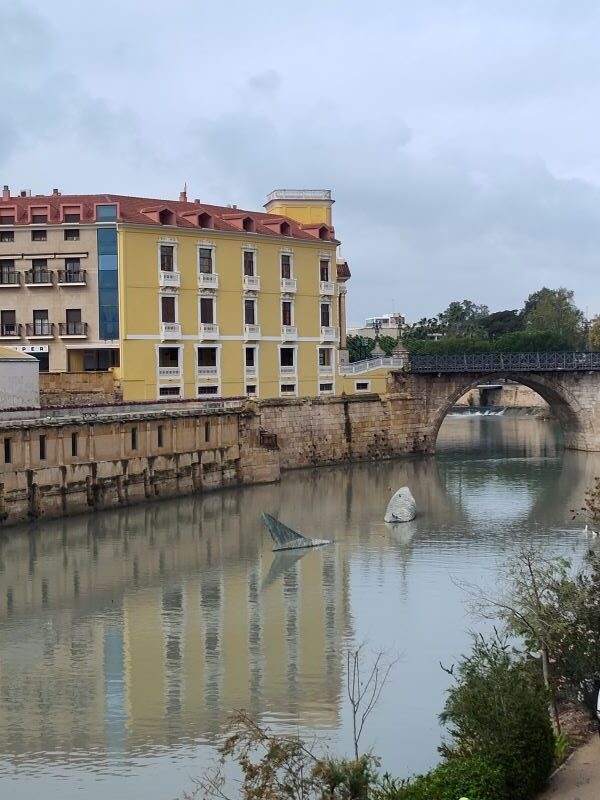
Another view of the Segura River walk
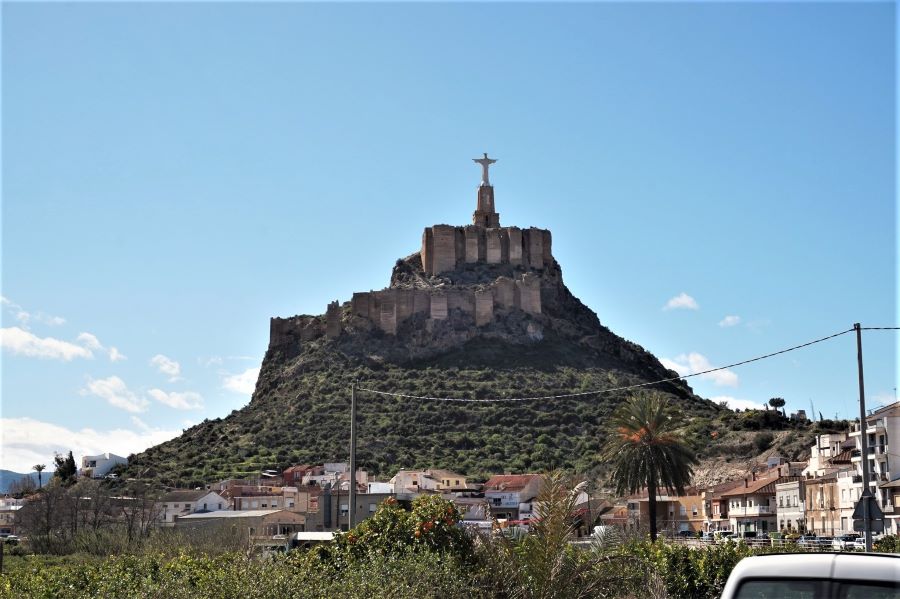
Monteagudo Castle (Castillo de Monteagudo)
Monteagudo Castle, perched atop a 149-meter-high rocky hill just northeast of Murcia, is a striking historical landmark visible from miles around. Its most prominent feature is the 14-meter-tall Christ of Monteagudo statue, erected in 1951, which crowns the fortress and overlooks the fertile Huerta de Murcia. The castle’s origins trace back to the 11th century during Muslim rule, with significant expansions in the 12th century under King Ibn Mardanish, also known as “El Rey Lobo.” He established a defensive line including Monteagudo, Castillejo, and Larache castles to protect the region. Following the Christian reconquest, King Alfonso X of Castile chose Monteagudo as his residence in Murcia, further cementing its historical significance. Today, while the castle itself is not open to the public due to preservation concerns, visitors can explore the Monteagudo Visitor Centre at its base, which offers insights into the area’s 5,000-year history through exhibits on Argaric, Iberian, Roman, and Arab civilizations. The center also provides information on nearby hiking routes that offer panoramic views of the castle and surrounding landscapes. For more details, visit the official tourism page:
Check out more details to visiting the castle here.
-
- Ancient fortress with a striking Christ statue on top
- Just outside Murcia, great for a short hike and views
Museo de la Ciencia y el Agua (Science and Water Museum)
The Museo de la Ciencia y el Agua in Murcia, Spain, is an interactive science museum that explores the relationship between water, science, and life. Established in 1996, it features several engaging spaces: the Water Hall, which delves into water’s role in nature and human life through hands-on exhibits; a Planetarium offering immersive astronomical shows; a Temporary Exhibition Hall that hosts rotating science-themed displays; and the award-nominated Descubre H2O room, designed for young children to explore concepts of water and light in a sensory-friendly environment. The museum also offers workshops, seasonal events, and educational programs aimed at fostering curiosity and scientific understanding among visitors of all ages.
Check out more details to visiting the museum here.
-
- Interactive exhibits for families and kids
- Focuses on water’s role in the region’s development
Murcia Archaeological Museum
The Museo Arqueológico de Murcia offers a comprehensive look into the region’s rich history, spanning from the Paleolithic era to the Middle Ages. Located in the Casa de la Cultura, a building inaugurated in 1956, the museum houses 17 exhibition halls over two floors. Its collections feature artifacts from significant archaeological sites across Murcia, including items from the Argaric, Iberian, and Roman periods. Noteworthy pieces include Iberian sculptures, Roman architectural elements, and artifacts from the Argaric culture, such as distinctive ceramics. The museum also provides educational workshops and temporary exhibitions throughout the year. Admission is free, and visitors can request an English-language guidebook at the entrance.
- Showcases Roman and Moorish artifacts
- Insight into the region’s deep historical roots
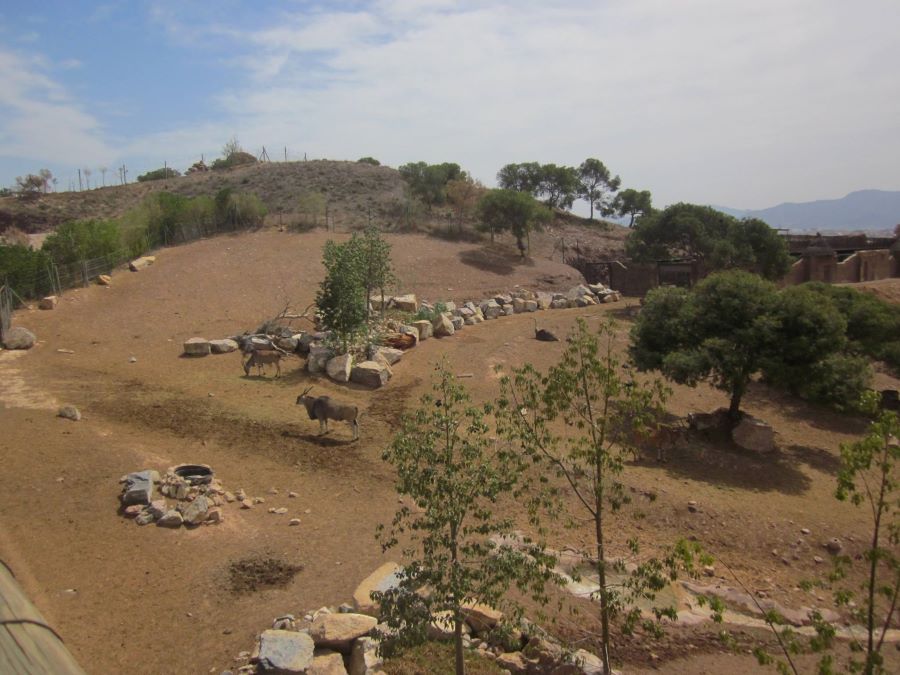
Terra Natura Murcia
Terra Natura Murcia is a modern wildlife and water park located on the outskirts of Murcia, Spain. The zoo is home to over 500 animals from 50 different species, including lions, giraffes, white rhinos, Iberian wolves, and brown bears. The park’s design emphasizes “zoo immersion,” allowing visitors to observe animals in habitats that closely resemble their natural environments, with barriers that are nearly invisible to the human eye. In addition to the zoo, Terra Natura features Aqua Natura, the only water park in the Region of Murcia, offering attractions like water slides, a lazy river, and a splash park for children. The park also hosts educational talks, bird of prey demonstrations, and has recently introduced a farm school with domestic animals to enhance the interactive experience for visitors of all ages.
- Zoo and water park combo perfect for families
- Emphasizes naturalistic habitats and conservation
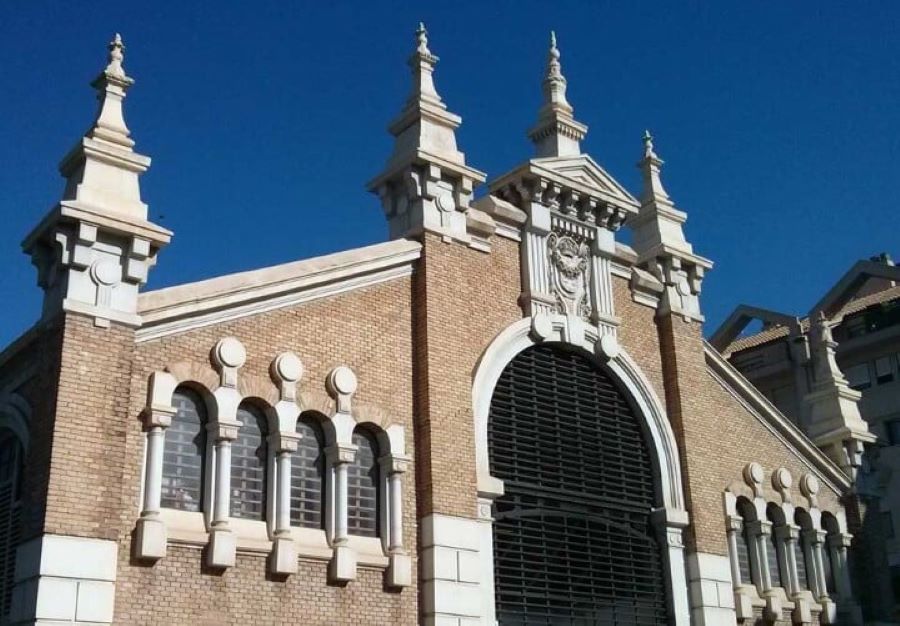
Murcia’s Traditional Markets
Murcia’s traditional markets are a lively reflection of the region’s agricultural roots and local culture. Spread across the city and its surrounding neighborhoods, these markets operate on different days of the week and are known for their fresh produce, locally made cheeses, cured meats, olives, and seasonal specialties. Stalls overflow with colorful fruits, vegetables, flowers, textiles, and household goods, creating a casual, social atmosphere where residents often stop to chat with vendors. Some of the more popular markets include the Thursday market in La Fama and the bustling Saturday market near the Verónicas building. These gatherings aren’t just for shopping—they’re a local ritual and an easy way to get a sense of everyday life in Murcia.
- Verónicas Market (Mercado de Verónicas): Local produce and regional food specialties
- Thursday and Saturday markets: Great for foodies and browsing crafts
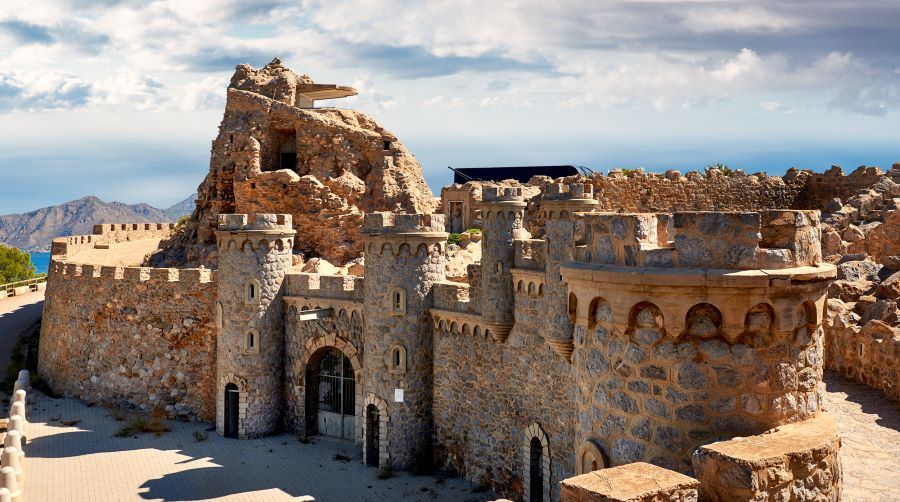
Nearby Day Trips
Sure, here’s a list-style outline of nearby day trips from Murcia worth exploring:
1. Cartagena
- Ancient Roman port city with a well-preserved Roman Theater.
- Naval Museum and Civil War shelters offer a glimpse into its military past.
- Scenic harbor and modernist architecture in the city center.
2. Caravaca de la Cruz
- One of the five holy cities of Catholicism.
- Visit the Sanctuary of Vera Cruz and medieval old town.
- Scenic mountain setting and religious significance.
3. Lorca
- Known for its baroque architecture and the imposing Lorca Castle.
- Quiet streets and a historic core with churches, palaces, and museums.
- Excellent local gastronomy and artisan shops.
4. Cieza
- Best visited in early spring for the “Floración” when peach orchards bloom.
- Great for hiking and exploring natural landscapes.
- Home to archaeological sites like Medina Siyâsa.
5. Sierra Espuña Natural Park
- Ideal for outdoor activities like hiking, biking, and wildlife spotting.
- Dense pine forests, mountain views, and traditional villages.
- Quiet, less touristy escape into nature.
6. La Manga del Mar Menor
- Narrow strip of land between the Mediterranean Sea and Mar Menor lagoon.
- Popular for water sports, beach relaxation, and coastal walks.
- Family-friendly and easy access from Murcia.
7. Jumilla
- Famous for its wineries and bold red wines.
- Wine tastings, vineyard tours, and a hilltop castle.
- Quiet town vibe with strong wine culture.
8. Yecla
- Another major wine-producing town in Murcia.
- Explore local bodegas, rural landscapes, and hiking paths.
- Less visited than Jumilla, making it feel more off-the-radar.
Let me know if you want distances, transportation tips, or hidden spots in any of these.
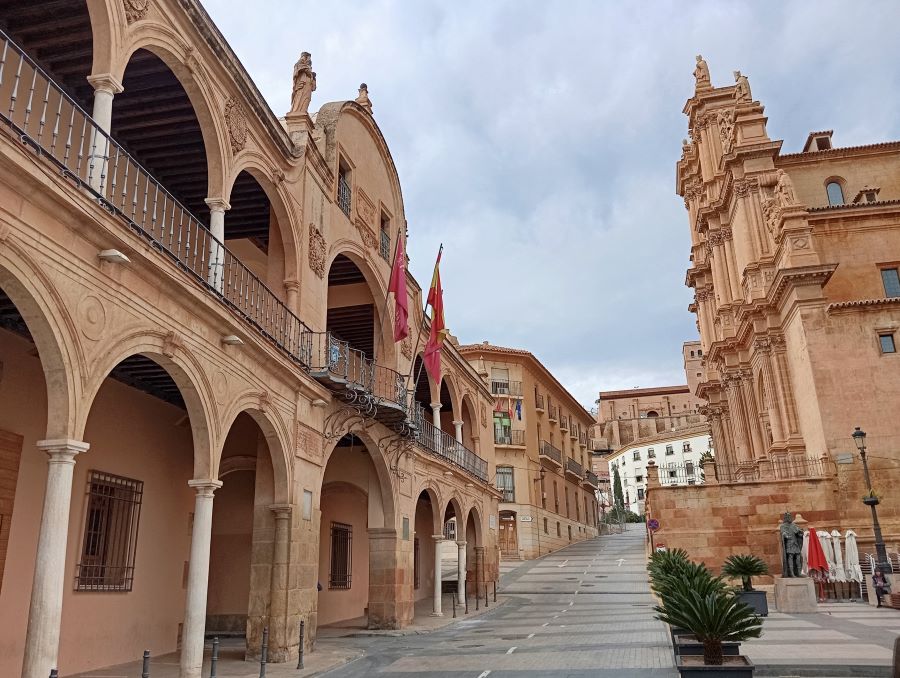
Check out these other posts to visiting the region
If your planning on exploring more of the area, check out these other posts to visiting here:
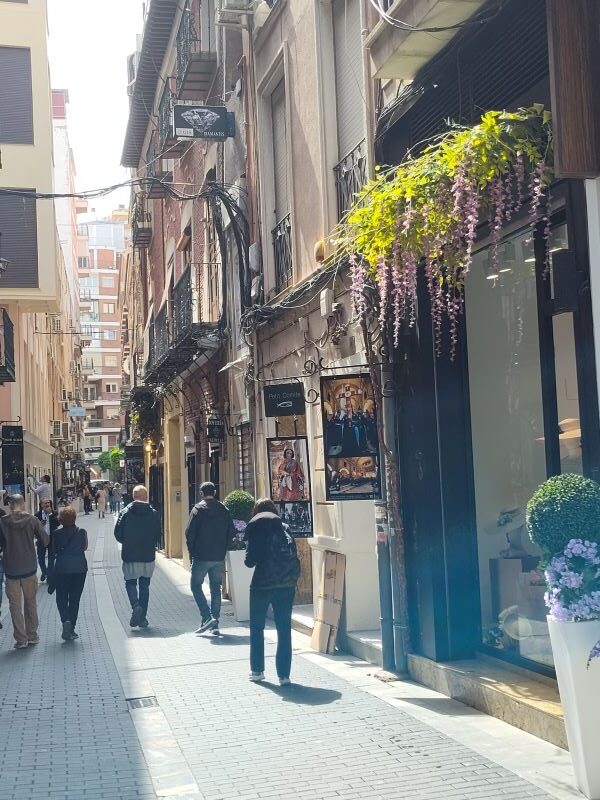
Conclusion for visiting Murcia
This is such a fabulous and historic city to visit, I just loved exploring the Old Town and other parts of the city. If you want more information, you can check out visiting the Visit Murcia website here for more information and details.
It’s easy enough to just walk down the wonderful pedestrian lanes that open up to wonderful plazas and historic buildings,it’s easy enough to explore and enjoy on its own.
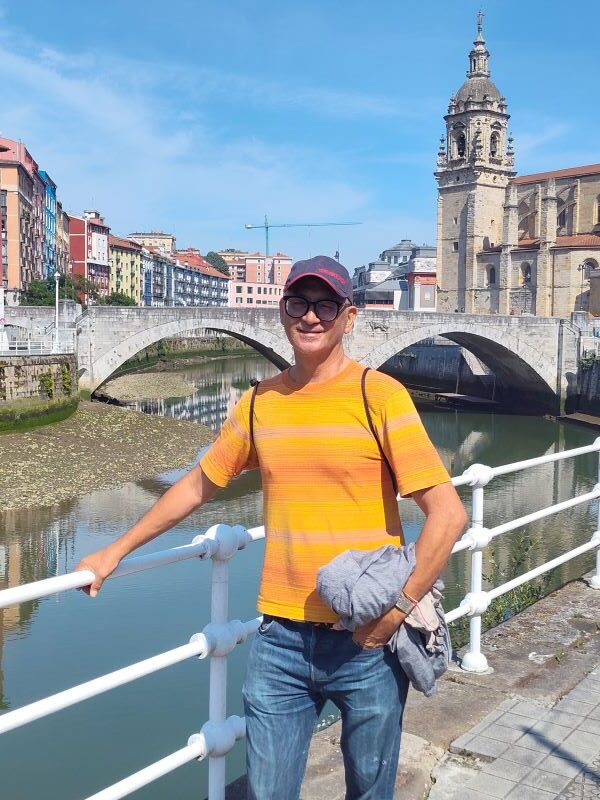
About author – Noel Morata
After relocating from the United States to Andalusia in 2020, I’ve made it my mission to discover every corner of Spain. Based just east of Granada, I’ve spent over 12 months exploring Valencia province and the rest of Spain, including multiple extended visits to Valencia throughout different seasons. My background in Spanish cultural studies and five years of residence in southern Spain have given me unique insights into the region’s historical significance, local customs, and culinary traditions.
I regularly update my guides with the latest information gathered through personal visits and relationships with local tourism officials, always seeking what’s new and exciting in each destination. As a self-proclaimed foodie, I’m passionate about discovering authentic local markets and regional specialties.
